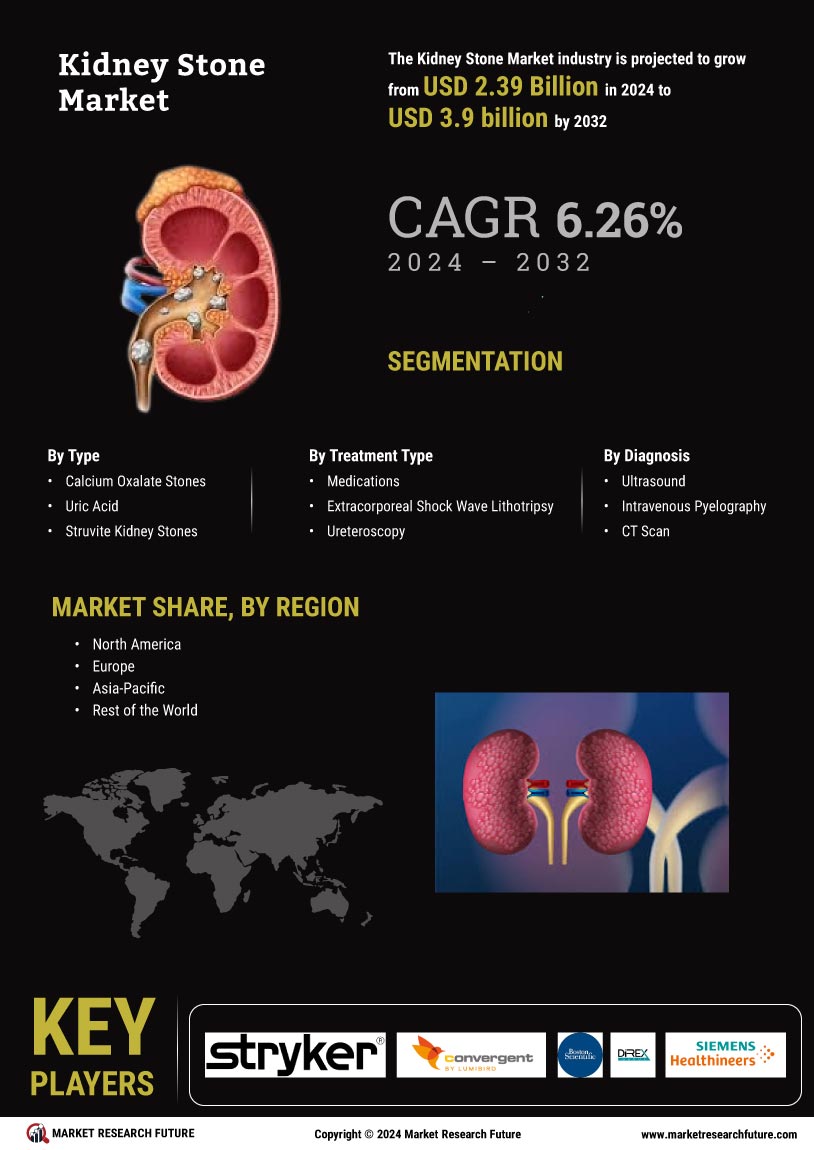Rising Geriatric Population
The aging population is a significant factor contributing to the growth of The Global Kidney Stone Industry. As individuals age, the risk of developing kidney stones increases due to various physiological changes and comorbidities. The World Health Organization projects that the number of people aged 60 years and older will double by 2050, reaching over 2 billion. This demographic shift is likely to result in a higher incidence of kidney stones, thereby increasing the demand for treatment options. Healthcare systems will need to adapt to this growing need, potentially leading to innovations in care delivery and management strategies within The Global Kidney Stone Industry.
Growing Awareness and Education
The increasing awareness surrounding kidney stones and their prevention is a crucial driver for The Global Kidney Stone Industry. Educational campaigns by healthcare organizations and government bodies are helping to inform the public about risk factors, symptoms, and treatment options. This heightened awareness is leading to earlier diagnosis and intervention, which can significantly improve patient outcomes. Moreover, as more individuals become educated about dietary and lifestyle modifications that can prevent kidney stones, there is a potential decrease in incidence rates. This shift may lead to a more proactive approach to kidney health, ultimately influencing the demand for preventive care solutions within The Global Kidney Stone Industry.
Advancements in Medical Technology
Technological innovations in the medical field are significantly influencing The Global Kidney Stone Industry. The introduction of minimally invasive surgical techniques, such as ureteroscopy and laser lithotripsy, has transformed the treatment landscape. These advancements not only enhance patient outcomes but also reduce recovery times, making procedures more appealing to patients. Furthermore, the development of advanced imaging techniques, such as CT scans and ultrasound, allows for better diagnosis and treatment planning. As these technologies continue to evolve, they are expected to drive market growth, with a projected increase in the adoption of these methods by healthcare facilities worldwide. The integration of technology into treatment protocols is likely to enhance the overall efficiency of kidney stone management.
Increasing Incidence of Kidney Stones
The rising prevalence of kidney stones is a primary driver for The Global Kidney Stone Industry. Recent studies indicate that approximately 10 percent of the population will experience a kidney stone at some point in their lives. This condition is becoming more common due to factors such as dietary changes, obesity, and dehydration. The market is projected to grow as more individuals seek treatment options, with estimates suggesting a compound annual growth rate of around 5.5 percent over the next few years. As awareness of kidney stone symptoms increases, healthcare providers are likely to see a surge in patient consultations, further propelling the demand for innovative treatment solutions within The Global Kidney Stone Industry.
Expansion of Healthcare Infrastructure
The expansion of healthcare infrastructure in various regions is poised to impact The Global Kidney Stone Industry positively. As countries invest in healthcare facilities and services, access to treatment for kidney stones is likely to improve. This expansion includes the establishment of specialized urology centers and the availability of advanced diagnostic tools. Enhanced healthcare access can lead to earlier detection and treatment of kidney stones, which may reduce complications and improve patient outcomes. Furthermore, as healthcare systems evolve, there may be an increase in the availability of preventive care programs, which could further drive market growth in The Global Kidney Stone Industry.

















Leave a Comment